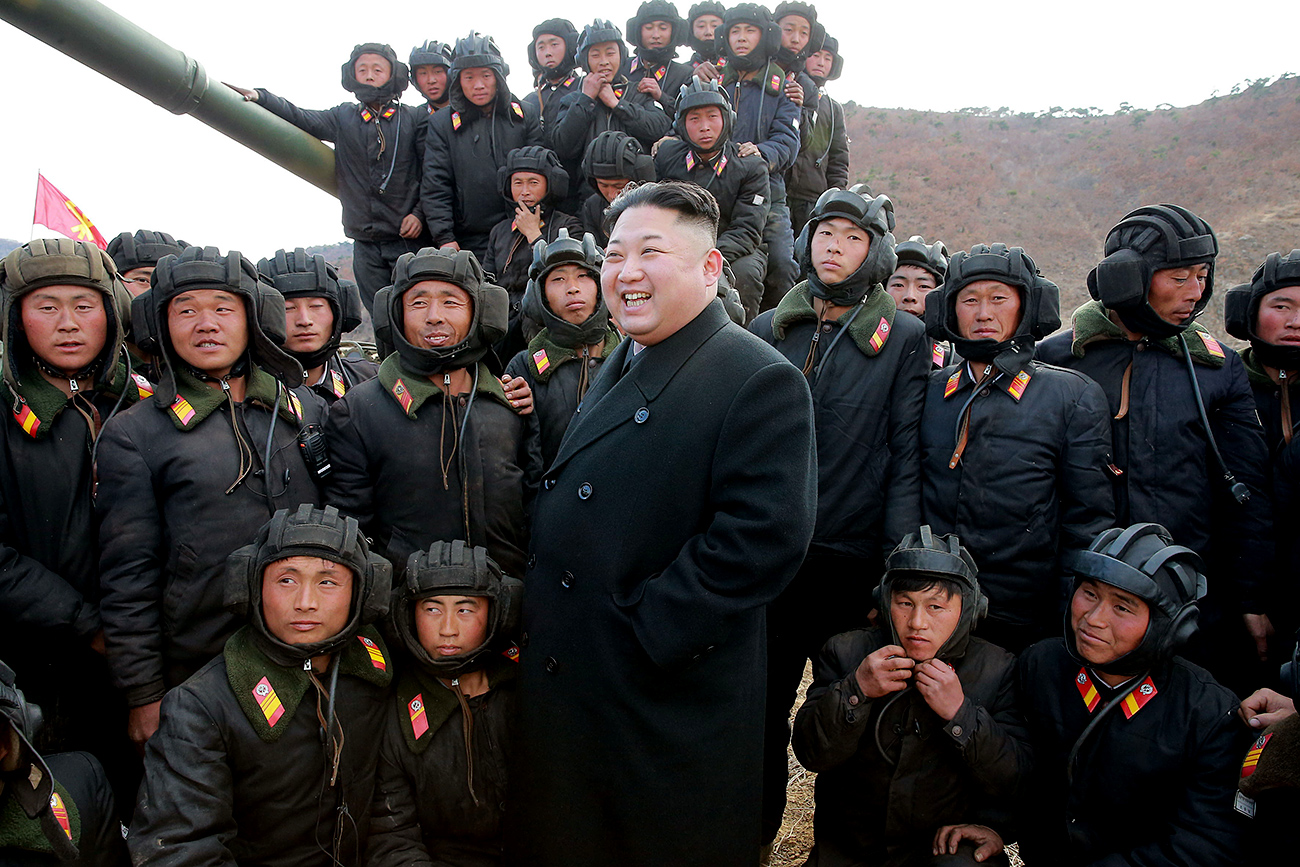How North Korea may respond to the deployment of THAAD in South Korea

North Korea has struck a defiant tone against the United States.
ZUMA Press/Global Look PressIt is obvious that Pyongyang does not see Washington’s deployment of the Terminal High Altitude Area Defense (THAAD) system in South Korea as a defensive measure. The North Koreans strongly believe that the American missile defense system could be used to attack them.
It means that Pyongyang’s response will be, in the first place, military, and will take into account the weaknesses of the THAAD. North Korean military planners know that defense missile system is not able to cover the whole territory of South Korea.
It is important to note that North Korea has no urgent need to develop missiles with a comparable level of technology as those owned by Russia and the United States.
To cover the whole territory of South Korea and Japan, including American military bases, Pyongyang needs to have missiles with ranges up to 3,000 kilometers. And to overcome the missile defense system, North Korea only needs to slightly increase the number of missiles.
THAAD is designed to counter ballistic missiles at ranges of up to 200 kilometers and altitudes of 40 to 150 kilometers. To defend the entire territory of South Korea just from medium-range missiles launched from North Korea, at least three THAAD batteries are required.
What Pyongyang has already done
Apparently, North Korean military strategists have carefully reviewed the THAAD system and are ready to use the weaknesses of the system to their advantage.
First of all, over the last few years, Pyongyang has started using the KN-09 heavy multiple rocket launcher. Long-range rockets are already capable of hitting the area of deployment of the THAAD.
Secondly, North Korea is actively working on multiple launches. Going by the country’s logic, the more missiles that move towards the target, the lower the probability of a guaranteed interception.
In September 2016, it simulated the start-up of three SCUD-ER missiles and in March 2017 it did so with four missiles. THAAD was never tested to counter a large number of ballistic missiles flying at one target.
Thirdly, the Hwasong-10 missile can break through the THAAD if launched from space, with an apogee of 1,000 kilometers. The same applies to the SCUD-ER and Rodong-1 missiles.
And finally, North Korea could “stab its enemies in the back.” The angle of the THAAD is only 120 degrees. This means that ballistic missile launched by submarines from the East or Yellow seas, may easily cover a THAAD system looking at North Korea.
What North Korea will be able to do
According to the Pyongyang-based Korean Central News Agency, North Korea is actively developing the Pukguksong-2 missile with maneuverable reentry vehicle, which guarantees the overcoming of the THAAD shield. Primary tests were carried on February 12, 2017.
The North Koreans could also develop an analogue of the British Polaris A-3 missiles, which in addition to these warheads carries the so-called penetration aid carrier.
One such missile carries about 30 potential targets. A volley of 16 Polaris missiles launched from one submarine can carry more than 500 targets, including 32 real warheads, which almost guarantee overcoming the missile defense system. North Korea, which has already been launching satellites on space rockets, will require five to seven years of work to develop such a missile.
On top of that, along with the deployment of THAAD in Korea and potentially in Japan, the deployment of other missile defense systems at sea and on land will probably push North Korea towards more advanced measures such as the development of solid propellant missiles.
This is an abridged and modified version of an article, originally published in Korean by russiafocus.co.kr
Vladimir Khrustalev is a Russian expert on North Korea's military program
If using any of Russia Beyond's content, partly or in full, always provide an active hyperlink to the original material.
Subscribe
to our newsletter!
Get the week's best stories straight to your inbox
